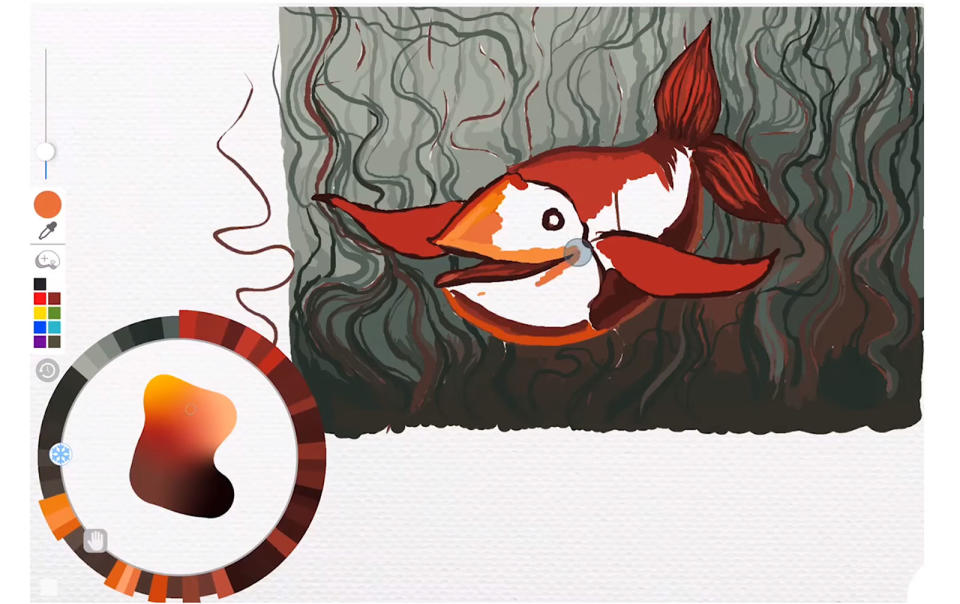Adobe’s 'Playful Palette' makes color mixing artist-friendly
It works like real paint, but with the advantages of digital.
Artists work with real paint by mixing groups of colors on a palette, making for natural blending and color combinations. That's a far cry from Photoshop-type color pickers, which let you grab specific colors but not combine them. Adobe Research has come up with a solution called the "Playful Palette" that gives artists the best of both worlds. It lets you create "blobs" of paint you can blend for gradients and gamuts, while allowing non-destructive edits, infinite history and other digital benefits.
To use it, you start with a standard color picker and create blobs of different colors, based on complementary, shades, analogous or other color theory (using Adobe's Kuler color picker, for instance). The blobs can then be mixed by dragging them together, and also edited, moved, resized or deleted. "While simple, this representation allows an artist to easily construct and edit complex color gamuts," Adobe's team says in the video below.

Then, colors can be picked from the resulting blobs, just as artists would do with a physical paint palette. Unlike on a real artists easel, however, "Playful Palette can be rearranged at any time because color mixing is non-destructive," says Adobe.
As such, the system lets artists hone in more easily on color choices. For instance, attacking a subject like a bowl of fruit, you may have a style, like dramatic or realistic, in mind. That can affect your choice of colors: "The fruit could be saturated with dramatic violet shadows and stark highlights, or more realistic, with brown shadows and subtle hues of pink," the paper notes. Knowing that, an artist could get those blobs ready ahead of time and focus on a specific palette.
Adobe isn't the first to dream of a better color picker -- Corel's Paint Shop Pro includes an advanced color mixer, for instance. However, Adobe Research's concept is perhaps the most like a physical color palette. There's no word on whether this will make it into Photoshop CC or its new cloud photo editor, but Adobe will present a paper on it for Siggraph 2017, so we may hear more then.




